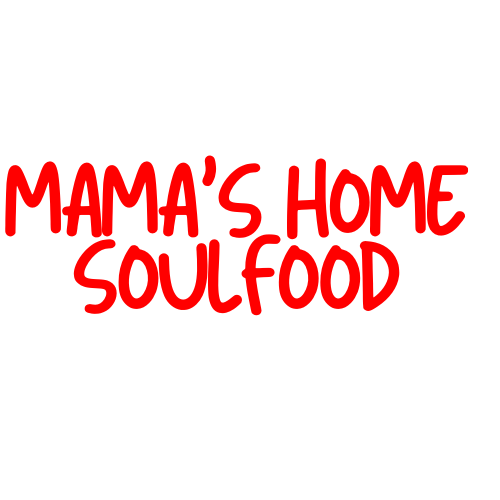In today’s diverse culinary landscape, understanding dietary restrictions is essential for any caterer aiming to create inclusive menus and a comprehensive caterer’s guide.
Food allergies, intolerances, religious beliefs, dietary preferences, and lifestyle choices affect how we plan and prepare meals.
This article explores the various types of dietary restrictions, emphasizes their importance, and provides practical tips for crafting inclusive menus that cater to all guests.
Join us as we uncover the essentials for a successful and inclusive dining experience.
- Understanding Dietary Restrictions
- Common Dietary Restrictions
- Creating Inclusive Menus
- Working with Dietary Restrictions in the Kitchen
- Frequently Asked Questions
- What are common dietary restrictions to consider when creating inclusive menus?
- How can I ensure that my menu is inclusive for guests with dietary restrictions?
- Are there any resources I can use to help me create an inclusive menu?
- How should I handle special dietary requests from guests, including meal customization?
- What are some common mistakes that caterers make when it comes to dietary restrictions and menu customization?
- How can I ensure that my staff are aware of and prepared to handle guests with dietary restrictions and dietary needs?
Understanding Dietary Restrictions
Understanding dietary restrictions is vital for catering services as it enables caterers to create inclusive menus that cater to diverse dietary needs, ensuring that clients’ preferences and food sensitivities are met.
With the rise in food allergies, gluten-free, vegan options, vegetarian meals, kosher catering, halal food, and nut-free alternatives, it is imperative to prioritize dietary restrictions awareness and implement effective meal customization and menu labeling.
This knowledge aids in cross-contamination prevention and compliance with various dietary guidelines, enhancing client satisfaction and ensuring food safety during events and gatherings.

What Are Dietary Restrictions?
Dietary restrictions refer to limitations that individuals impose on their food choices due to various reasons, including health conditions, ethical beliefs, cultural considerations, and personal preferences. These restrictions can encompass food allergies, intolerances, or adherence to specific diets such as vegan or kosher.
Understanding the origins of these dietary choices sheds light on their increasing prevalence in modern society. For instance, gluten intolerance has become a significant concern for many, while the rise of plant-based diets often stems from both health consciousness and animal rights advocacy. Additionally, lactose intolerance affects a substantial portion of the population, necessitating lactose-free dairy options.
In meal preparation, this complexity highlights the necessity for clear food labeling and allergen awareness, which are critical for ensuring safety and inclusivity. By adhering to established dietary guidelines, chefs and home cooks alike can create meals that accommodate diverse dietary needs, promoting a culture of understanding and respect for personal food choices.
Why Is It Important to Consider Dietary Restrictions and Preferences?
Considering dietary restrictions is essential for catering services as it directly impacts client satisfaction and the overall dining experience. By acknowledging these restrictions, caterers can offer diverse meal options that are health-conscious, reflect culinary creativity, and adhere to nutritional guidelines, while also respecting cultural considerations.
Understanding client demographics and preferences further enhances the relevance of menu offerings, enabling caterers to tailor their services to meet specific needs, including individual preferences and group dietary needs.
For instance, families with young children may prefer kid-friendly dishes, while health-conscious individuals might seek out balanced, lower-calorie options.
Incorporating logistical strategies such as pre-event consultations allows caterers to manage meal preparation efficiently, ensuring dietary needs are met. This attention to detail not only elevates the overall event experience but also fosters a sense of inclusivity, making guests feel valued and ultimately leading to positive feedback and repeat business. Effective client communication and regular client consultation are key to achieving these outcomes.
Common Dietary Restrictions
Common dietary restrictions encompass a wide range of limitations that individuals may have, driven by health, ethical, or religious motivations. These can include allergen-free cooking requirements or adherence to specific dietary laws.
These include food allergies, which can pose serious health risks, food intolerances that cause discomfort, and religious restrictions that dictate specific dietary laws.
1. Food Allergies
Food allergies represent a significant dietary restriction, where certain foods trigger adverse reactions in affected individuals, ranging from mild discomfort to severe anaphylactic shock. Recognizing and accommodating food allergies is crucial in catering services to ensure safety and satisfaction.
Understanding common food allergies, such as those to nuts, shellfish, dairy, and gluten, aids in creating menus that cater to diverse dietary needs. This understanding is critical for event catering and ensuring food safety.
Symptoms can vary widely, from hives and gastrointestinal distress to life-threatening anaphylaxis, emphasizing the importance of allergen awareness.
By implementing measures like ingredient substitutions and maintaining clear dietary documentation, restaurants can keep patrons informed and safe. This also involves regular taste testing and recipe development to ensure the quality and appeal of the dishes.
This proactive approach not only helps in crafting inclusive menus but also fosters trust between the establishment and its guests, ensuring that everyone can enjoy their meals without fear.
2. Food Intolerances
Food intolerances differ from allergies in that they typically involve digestive issues rather than immune responses, often leading to discomfort after consuming certain foods. Addressing food intolerances in catering involves careful ingredient sourcing and meal options that avoid problematic ingredients.
For instance, lactose intolerance can make dairy products challenging for many, resulting in bloating and digestive distress.
Similarly, gluten intolerance can force individuals to avoid wheat, barley, and rye altogether, limiting traditional meal choices.
Consequently, meal planners must be innovative and resourceful, exploring alternatives such as lactose-free dairy and gluten-free grains.
The sourcing of ingredients plays a pivotal role in ensuring dietary inclusivity. By prioritizing clean, unprocessed foods and verifying labels, caterers can create satisfying meal options that respect and accommodate these dietary restrictions without compromising on flavor or nutrition.
3. Religious Restrictions
Religious restrictions in dietary practices often dictate how food is prepared, processed, and consumed, with kosher and halal diets being prominent examples. These restrictions are rooted in cultural considerations that caterers must understand to provide appropriate meal options.
By being well-versed in the nuances of these dietary laws, catering professionals not only ensure compliance but also enhance the overall dining experience for clients.
Adhering to kosher and halal standards reflects respect for the beliefs of those they serve, fostering trust and satisfaction. This understanding, which encompasses everything from ingredient sourcing to cooking methods, allows caterers to create menus that are both flavorful and compliant. Ensuring adherence to nutritional balance while respecting dietary compliance is also essential.
Clients who feel that their dietary needs are met often report higher satisfaction levels, making it essential for caterers to prioritize these guidelines in their meal preparations.
4. Medical Diets
Medical diets are prescribed based on specific health conditions or nutritional needs, such as diabetes management or heart-healthy eating. Catering to these special diets is essential for ensuring that individuals receive the necessary nutrition and health benefits required for their well-being. This may involve special diets that cater to unique health considerations.
These diets often include personalized meal plans that take into account the individual’s preferences, food allergies, and any accompanying medical treatments.
By adhering to the dietary guidelines set by healthcare professionals, individuals can better manage their health outcomes and improve their quality of life. Effective meal planning and nutritional education play crucial roles in this process.
For example, a low-sodium diet can help clients with hypertension reduce their blood pressure, while a gluten-free diet is crucial for those with celiac disease.
This tailored approach not only enables individuals to make healthier choices but also enhances their understanding of the impact that specific foods can have on their overall health. In addition, it promotes dietary education and awareness.
5. Lifestyle Diets
Lifestyle diets reflect personal choices regarding food, often influenced by ethical, environmental, or health considerations, with vegan and gluten-free diets being popular examples. Understanding these lifestyle diets allows catering services to create menus that resonate with consumer awareness, ethical sourcing practices, and align with current food trends.
The increasing interest in sustainable eating habits has prompted a shift in how menus are designed, leading to greater diversity in available meal options. This evolution comes as individuals become increasingly discerning about where their food comes from and the impact it has on the planet. Consequently, sourcing local ingredients and ensuring menu adaptability are now more important than ever.
Caterers must adapt to these changing preferences, emphasizing local, seasonal ingredients and transparent sourcing practices to meet the demands of informed consumers. By prioritizing ethical sourcing, they not only enhance menu appeal but also foster a connection with patrons who value sustainability, ultimately shaping a more conscientious dining culture.
Creating Inclusive Menus
Creating inclusive menus is essential for catering services, as it allows for meal customization that meets the diverse dietary restrictions and preferences of clients and guests. This also involves budgeting for catering to ensure financial feasibility.
This involves an understanding of food pairings, culinary techniques, and the flexibility to adapt menus according to client feedback.
1. Communication with Guests and Clients
Effective communication with guests is crucial in catering, allowing caterers to gather vital information about dietary needs and preferences, which can significantly influence menu planning and meal alternatives. Engaging in thorough client consultations and client communication ensures that all dietary restrictions are considered.
By fostering an open dialogue, caterers can better understand any allergies, intolerances, or personal preferences that may dictate what is suitable for each guest. This includes recognizing food allergies and planning for lactose intolerance, vegetarian, vegan, Kosher, and Halal diets.
Active listening is essential during these discussions, as it not only demonstrates respect but also builds trust, ultimately leading to a more customized culinary experience.
When the caterer takes the time to comprehend these nuances, it reflects positively on their customer service, as guests feel valued and heard.
This commitment can elevate overall satisfaction and encourage repeat business, as well as positive word-of-mouth referrals from delighted patrons.
2. Labeling and Identifying Allergens and Dietary Compliance
Labeling and identifying allergens in food offerings is a vital aspect of providing safe dining experiences for guests with food allergies and intolerances, and ensuring dietary compliance. Clear labeling enhances food presentation while allowing diners to make informed decisions about their meal choices.
To achieve this, restaurants must adopt best practices for allergen labeling and menu labeling, ensuring that ingredient lists are not only comprehensive but also easily understandable. Transparency is key; clear communication about potential allergens can significantly reduce the risk of adverse reactions.
This responsibility extends to dietary documentation, food labels, and maintaining health-conscious choices, which serves as a crucial resource for guests, enabling them to navigate menu options safely.
By providing detailed allergen information and maintaining an open dialogue about ingredients, eateries foster trust and enhance the overall dining experience for everyone, especially those with specific dietary needs.
3. Offering Alternative Options
Offering alternative options in catering can significantly improve guest satisfaction, especially for those with dietary restrictions. By customizing meals to include a variety of flavor profiles and meal alternatives, caterers can ensure that everyone enjoys a delicious dining experience.
Incorporating gluten-free, vegan, or allergen-free meals not only adheres to dietary guidelines but also introduces guests to exciting and diverse culinary experiences. These vegan options and nut-free choices ensure that dietary preferences are met.
By embracing seasonal ingredients and innovative cooking techniques, caterers can craft dishes that are both nutritious and full of flavor. This menu adaptability ensures client-specific menus that cater to individual preferences.
For instance, utilizing quinoa and lentils can create hearty vegan options, while gluten-free grains like brown rice can serve as delicious bases for various dishes. These choices support gluten-free and vegan options in catering.
Incorporating fresh herbs and spices can enhance the natural taste of these meals, ensuring that everyone feels included and satisfied at the table. This approach aligns with trends in culinary inclusivity and menu innovation.
4. Cross-Contamination Prevention
Preventing cross-contamination in the kitchen is essential for safeguarding the health of guests with food allergies and intolerances. Implementing strict kitchen safety protocols and allergen awareness can significantly reduce the risk of unintended exposure to allergens.
By adopting effective cooking techniques such as using separate cutting boards for different food groups and thoroughly cleaning surfaces between tasks, kitchens can take proactive steps toward minimizing risks.
Proper staff training in hygiene practices, like the correct use of gloves and the importance of hand washing, plays a pivotal role. Fostering a culture of awareness among team members about the potential dangers of cross-contamination ensures that everyone remains vigilant in maintaining a safe dining environment.
This collective effort ultimately leads to increased confidence among customers, reassuring them that their dietary needs are a priority.
5. Planning for Buffet-Style Events
Planning for buffet-style events requires careful consideration of meal accessibility and dietary restrictions, ensuring that all guests can enjoy a variety of dishes without concerns. This involves thoughtful catering logistics, event-specific menus, and clear dietary documentation.
To achieve this, organizers must evaluate the specific dietary needs of their attendees, including allergies, vegetarian and vegan preferences, and gluten-free options.
An effective layout is paramount; stations should be designed to facilitate easy flow and prevent crowding.
Utilizing clear, informative labels for each dish can further enhance the experience, providing guests with crucial information at a glance.
Engaging with caterers to create diverse meal options ensures that no one feels excluded, fostering an inclusive environment where everyone can indulge hassle-free. This approach also supports cultural cuisine and dietary restrictions awareness.
Ultimately, attention to detail in both presentation and accessibility, including food ethics and menu optimization, can elevate the enjoyment of all attendees.
Working with Dietary Restrictions in the Kitchen
Working with dietary restrictions in the kitchen involves implementing best practices for ingredient substitutions and ensuring proper food preparation techniques and cooking methods are followed to accommodate diverse dietary needs.
Prioritizing kitchen safety and staff training enhances the ability to provide safe meals. Recognizing health considerations and dietary preferences is also critical in this process.
1. Ingredient Substitutions
Ingredient substitutions are a practical way to adapt recipes to meet dietary restrictions while maintaining flavor and nutritional balance. Caterers can enhance flavor profiles by exploring alternative ingredients that align with specific dietary needs.
By replacing traditional dairy products with options like almond milk or coconut yogurt, one can not only cater to those with lactose intolerance but also introduce a subtle nutty or tropical note that enriches the dish. This aligns with food trends and recipe customization.
Similarly, opting for gluten-free flour in baked goods opens up exciting new textures, allowing for delightful variations in cookies and breads. This supports menu diversity and recipe development.
Each substitution invites creative recipe development, fostering experimentation with spices, herbs, or unique ingredients. This process involves ingredient sourcing and flavor development.
It’s essential to consider how these swaps impact the overall taste and mouthfeel, ensuring that every dish remains satisfying and delicious regardless of dietary constraints. This awareness aids in culinary exploration and food experience.
2. Proper Food Preparation and Handling
Proper food preparation and handling practices are critical for ensuring the safety of meals served to guests with dietary restrictions. Adhering to recommended dietary guidelines and implementing safe cooking techniques can minimize the risk of cross-contamination.
When handling allergenic ingredients, it’s essential to maintain a clean workspace, utilizing separate cutting boards and utensils for different foods.
Washing hands thoroughly before and after preparing meals is a must, as it helps prevent the transfer of allergens.
Using clearly labeled containers for storing ingredients can also be beneficial, reducing the likelihood of unintentional exposure.
Being aware of each guest’s specific allergies or intolerances is crucial; well-informed cooks can make safer choices in ingredient selection and cooking methods. This knowledge supports dietary education and food safety.
Through these practices, not only is the well-being of individuals with dietary restrictions safeguarded, but a more inclusive dining experience is also created. This ensures customer satisfaction and promotes dietary inclusivity.
3. Training Staff on Dietary Restrictions and Allergen Awareness
Training staff on dietary restrictions is an essential aspect of providing exceptional customer service and ensuring kitchen safety in catering. Well-informed staff can effectively address guest inquiries and manage meals safely, reducing the likelihood of allergen exposure. This training includes allergen awareness and understanding dietary laws.
Such training encompasses a comprehensive understanding of various allergens and dietary needs, including gluten intolerance, nut allergies, and vegan preferences. It also fosters skills in dietary education and menu customization.
By equipping the team with this knowledge, establishments not only enable them to answer questions confidently but also cultivate an environment of trust and reassurance for customers.
A knowledgeable staff member can suggest appropriate menu items, accommodate special requests, and swiftly identify potential hazards, ultimately enhancing the dining experience. This promotes customer engagement and menu diversity.
This proactive approach not only mitigates risks but also fosters loyalty, as diners appreciate a thoughtful and attentive service that prioritizes their health and preferences. This supports customer satisfaction and repeat business.
Frequently Asked Questions
What are common dietary restrictions to consider when creating inclusive menus?
Some common dietary restrictions include allergies to nuts, dairy, gluten, and shellfish, as well as dietary choices such as vegetarian, vegan, Kosher, and halal diets.
How can I ensure that my menu is inclusive for guests with dietary restrictions?
Start by clearly labeling all menu items with potential allergens or dietary restrictions. You can also offer customizable options for guests to choose from, such as a build-your-own salad bar or a selection of gluten-free and vegan dishes.
Are there any resources I can use to help me create an inclusive menu?
Yes, there are many resources available such as online guides and courses that cater specifically to creating menus for guests with dietary restrictions. You can also consult with a nutritionist or dietician for expert advice.
How should I handle special dietary requests from guests, including meal customization?
Be sure to ask for any dietary restrictions, such as vegetarian, gluten-free, or vegan options, on your RSVP card or event registration form. If a guest sends a special request, be accommodating and try to find suitable options for them, keeping meal planning and client communication in mind. Communication is key to ensuring dietary compliance.
What are some common mistakes that caterers make when it comes to dietary restrictions and menu customization?
One common mistake is not properly labeling menu items with allergens or dietary restrictions, such as nut-free, Kosher, or Halal options. Another is not offering inclusive menus or enough options for guests with dietary restrictions, or not taking their dietary preferences and health considerations seriously.
How can I ensure that my staff are aware of and prepared to handle guests with dietary restrictions and dietary needs?
Make sure to train your staff on how to properly handle food allergies and dietary restrictions, focusing on allergen awareness and food safety. This includes cross-contamination prevention, proper food labels, and clear communication with guests. Regularly reviewing and updating training on culinary techniques and kitchen practices can also be helpful to maintain customer satisfaction and ensure culinary inclusivity.






